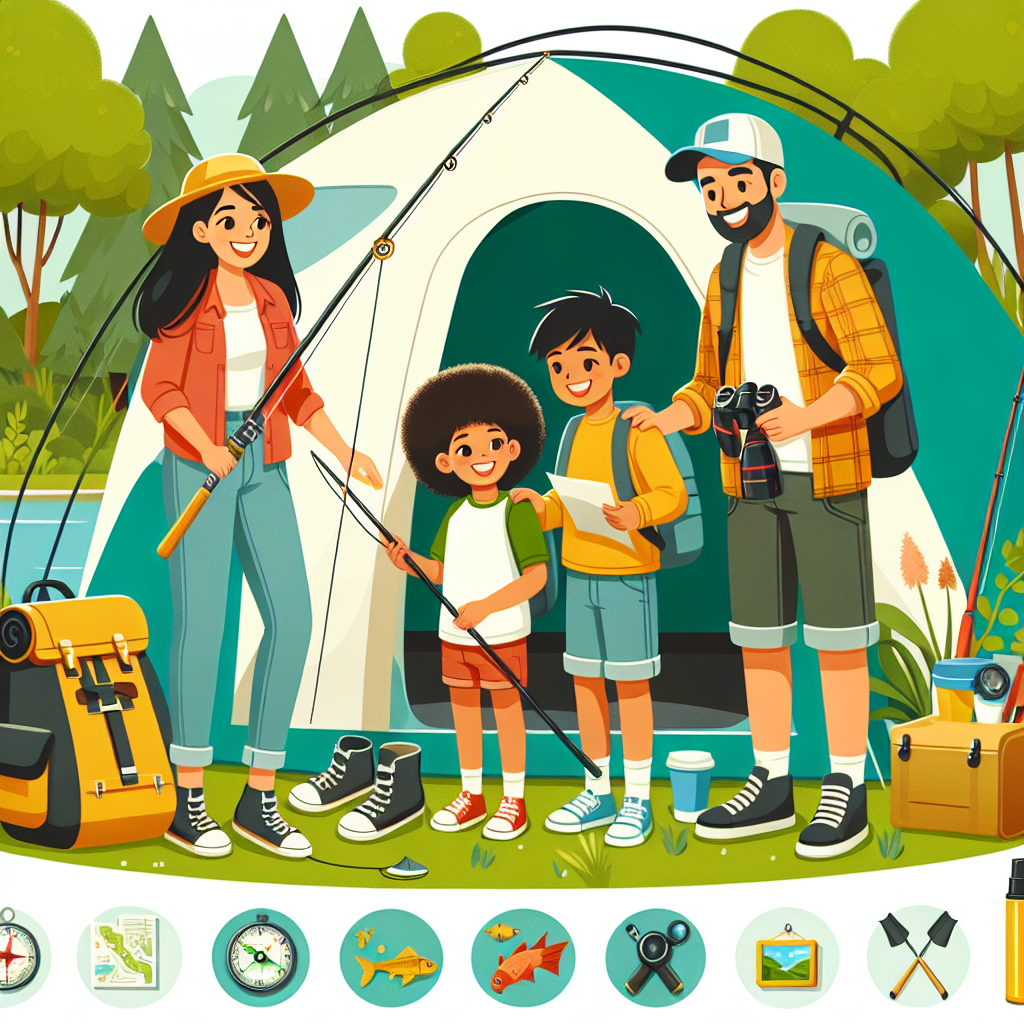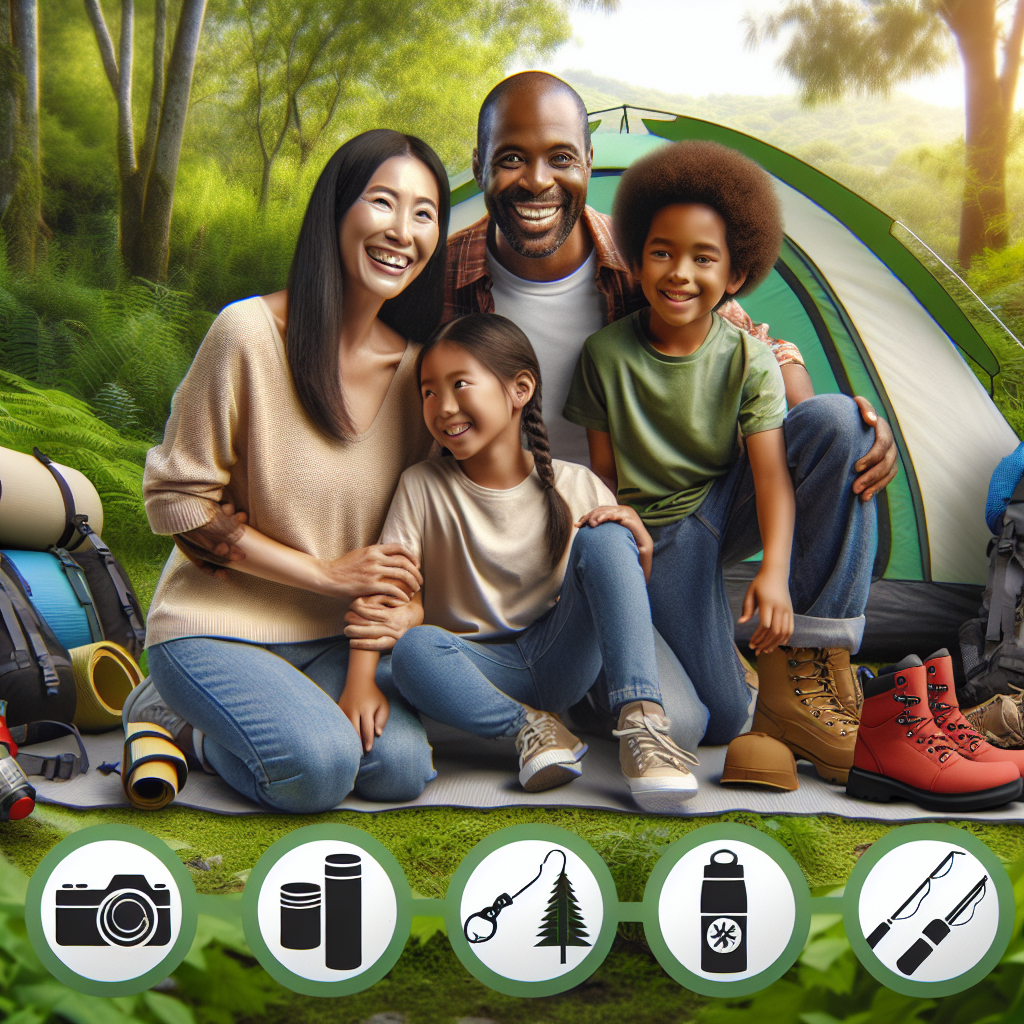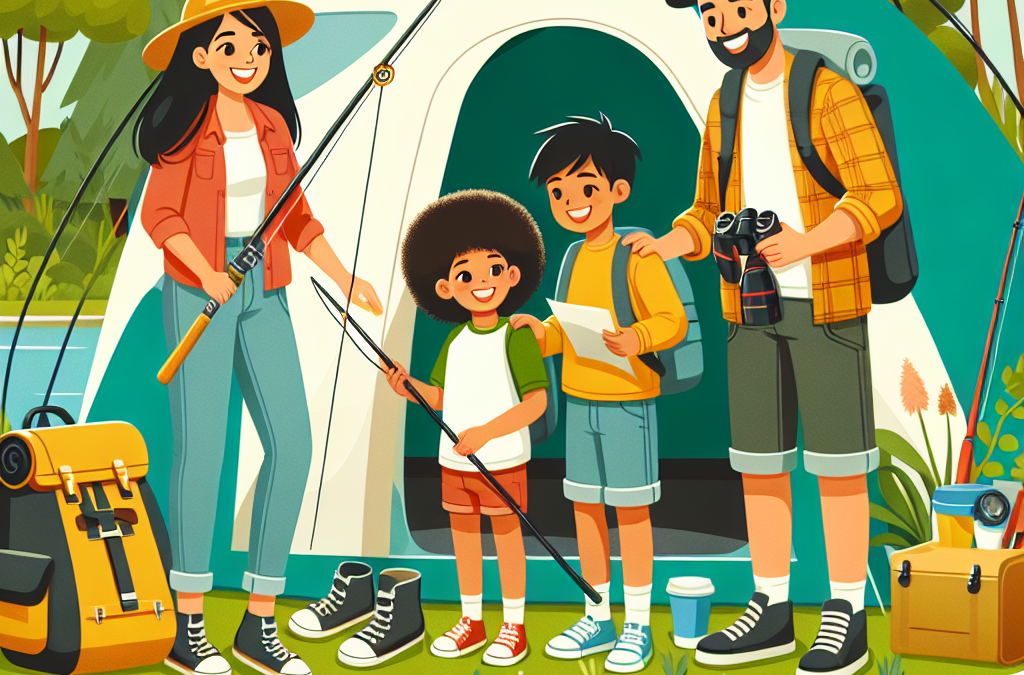If you’re yearning for some quality time in the great outdoors with your little ones, you’re in luck. This article, “Camping With Kids: Activities And Safety Tips”, is your tailored guide to creating memorable and safe camping experiences. You’ll discover an array of enjoyable activities to keep your children entertained whilst also touching upon important safety measures. Not only will it help to grow your kids’ love for nature, but it will also ensure peace of mind knowing they’re secure during these adventurous excursions.

Choosing a Kid-Friendly Campsite
Picking the right campsite sets the stage for a fun-filled and comfortable camping experience, especially when kids are involved. A good campsite makes it easier to keep the little ones safe and entertained throughout the trip.
Assessing terrain and campground amenities
You should examine the campsite terrain to ensure it’s safe and kid-friendly. Flat and open terrains are ideal since they minimize the risks of trips and falls. Examine the amenities the campground offers as well. Amenities like toilets, showers, play areas, and picnic tables can ensure your family’s comfort during the camping trip.
Selecting campground close to medical facilities
While it’s not pleasant to think about emergencies, it is crucial to consider the proximity of your chosen campsite to the nearest medical facilities. Kids can sometimes be unpredictable, and having easy access to medical help can give you peace of mind.
Selecting campsites with adequate space and shade
Ensure the campsite has enough room for the family to move around comfortably without feeling cramped. Adequate shade is also crucial, as it offers a reprieve from sunlight and helps keep the tent cool.
Packing Essentials for Kids
Pack smart when camping with kids. Remember, comfort, convenience, and safety should be your main focus.
Clothing essentials for all types of weather
Pack clothing that can stand up to all kinds of weather. Remember to pack waterproof gear, airy clothes for hot weather, and warm clothing for chilly nights.
Travel-size games and toys
Keep the little ones entertained by bringing along some compact travel-sized games and toys. This can range from cards, board games to their favorite toys.
Healthy snacks and hydration kits
Kids need frequent intervals of food and drink intake. Carry healthy snacks and a good hydration kit to ensure they always have something to munch on and drink.
Basic first aid supplies
A well-stocked first aid kit is a camping essential. It should include bandages, antiseptic wipes, tweezers, and any prescriptions your kids might need.
Activities to Keep Kids Engaged
Keep your kids active and occupied throughout the trip with fun and engaging activities.
Scavenger hunts in the woods
Create a list of things your kids can look for while out exploring. A scavenger hunt keeps them entertained and is a great way to acquaint them with nature.
Teaching basic camping skills
Engage your kids in setting up the camp, cooking, and tidying up after meals. Teaching basic camping skills can be fun, and it gives them a sense of responsibility.
Crafts and games using nature materials
Crafts that engage kids in the natural world around them can be super fun. Have them collect interesting leaves, stones, or twigs to make art.
Star gazing and storytelling sessions
Nighttime activities such as stargazing and storytelling can make for memorable moments on your camping trip.
Teaching Kids about Camping Etiquettes
While camping is an adventure, it’s essential to teach your kids about camping etiquette.
Respecting wildlife and nature
Educate your kids on the importance of respecting wildlife and not disturbing their habitats. Explain how littering can harm the environment.
Promoting ‘Leave No Trace’ principle
Teach your kids the principles of ‘Leave No Trace.’ Explain the importance of cleaning up after themselves, not removing natural artifacts, and not leaving things behind.
Teaching proper campfire safety rules
Campfires can be risky if proper precautions are not taken. Impress upon your kids the importance of campfire safety rules, and make sure they understand never to play with it.
Understanding quiet hours and neighbor respect
Teach kids that other campers are also seeking peace and relaxation. Therefore, respecting quiet hours and the personal space of others is important.

Ensuring Kids Safety at the Campsite
A safe camping trip is a fun camping trip.
Establishing campsite boundaries
Kids need to understand and stay within the campsite boundaries. This decreases the likelihood of them wandering off and getting lost.
Educating about harmful plants and insects
Familiarize yourself and your kids with harmful plants and insects in your camping area. Teach them to recognize and avoid them.
Making sure kids wear safety gear
When participating in activities, the right safety gear should be worn at all times. This can be helmets for biking, life jackets for water activities, or proper shoes for hiking.
Keeping kids in sight at all times
Kids should always be under adult supervision, especially near water or when engaging in outdoor activities.
Nutritious Meal Planning
The great outdoors can be a great classroom for teaching kids about nutrition and meal preparation.
Preparing kid-friendly camp meals
Plan meals that are healthy, easy to prepare, and that your kids will love. Some traditional camp meals can be easily modified to become kid favorites.
Teaching the importance of hydration
Emphasize the importance of staying hydrated throughout the trip to your kids, especially if the weather is hot or if they are participating in physical activities.
Packing sufficient and appropriate camping food
Ensure that you pack a little more food than you think you might need. This way, you’re covered in case of any unexpected delays or emergencies.
Cooking safety in the woods
Teach your kids about cooking safety in the great outdoors. Implement and follow safety precautions to avoid any accidents.
Building a Safe Campfire
A safe campfire contributes significantly towards a safe camping experience.
Teaching the procedure of making a campfire
Teach your kids the steps and precautions of starting a campfire safely. Make sure they understand the significance of fire safety.
Ensuring campfire safety
Never leave a campfire unattended and always have water nearby in case the fire needs to be put out quickly.
Putting out the campfire completely before bedtime
Ensure that the campfire is fully extinguished before going to bed or leaving site. A proper way is to douse it with water, stir the ashes, and douse it again.
Preparing for Different Weather Conditions
Different weather conditions require different preparations.
Dressing for different kinds of weather
Have different types of clothing for your kids to wear based on various weather scenarios. Layering is key to adapt to different temperatures throughout the day.
Seeking shelter during extreme weather
Ensure that you have a sturdy and waterproof shelter for your family to stay safe and dry during extreme weather conditions.
Securing camping gears during winds or rain
Teach your kids the importance of securing tents and other camping gears during winds or rain.
Dealing with Insect and Animal Threats
It’s important to take precautions to protect your family from insects and animals.
Protecting against insects and bugs
Use effective bug sprays and wear insect-repelling bracelets to keep bugs at bay. Also, ensure your tent is correctly zipped up to keep insects out.
Teaching kids to recognize signs of dangerous animals
Educate your kids about the signs and indications of nearby dangerous animals. Explain the appropriate safety procedures if they spot one.
Keeping food stored securely to prevent animal attraction
Ensure that all food and trash are stored securely in animal-proof containers to minimize the attraction for wildlife.
First Aid and Emergency Procedures
It is crucial to be prepared for any potential health and safety hazards.
Teaching kids about basic first aid
Teach your kids about basic first aid responses such as what to do for a cut, burn, or insect bite.
Having an emergency plan and contacts ready
Have an emergency plan in place that your kids are aware of. This should include key emergency contacts.
Learning and teaching signs of common outdoor illnesses
Educate your kids about the symptoms of common outdoor illnesses like dehydration, heatstroke, or hypothermia. Always be observant to their physical conditions.

